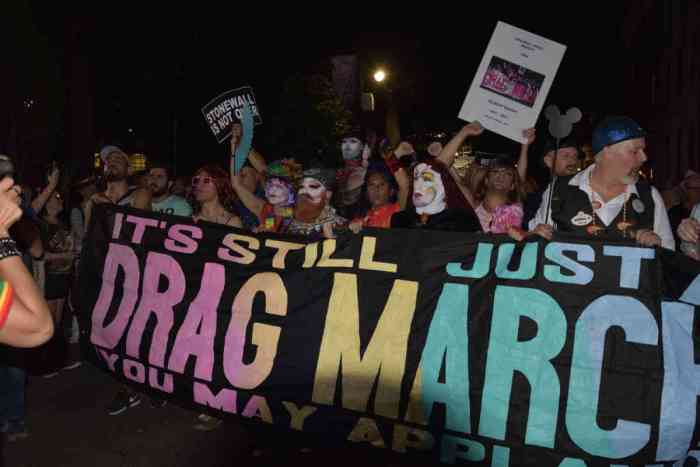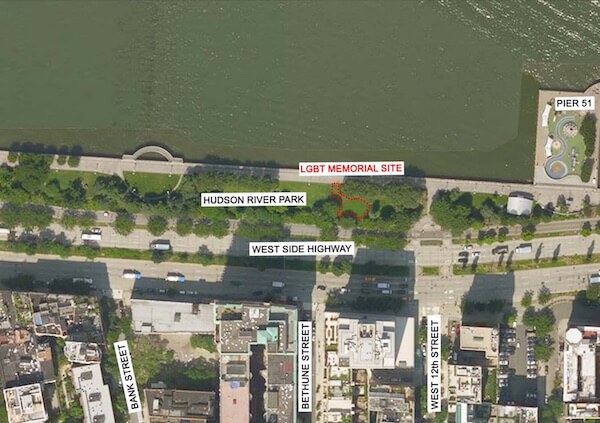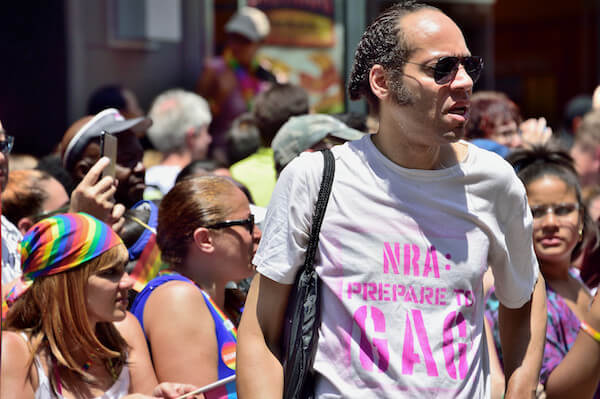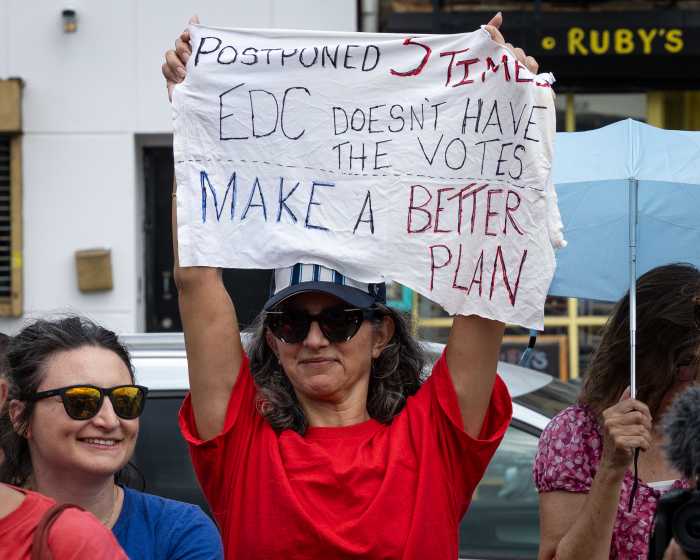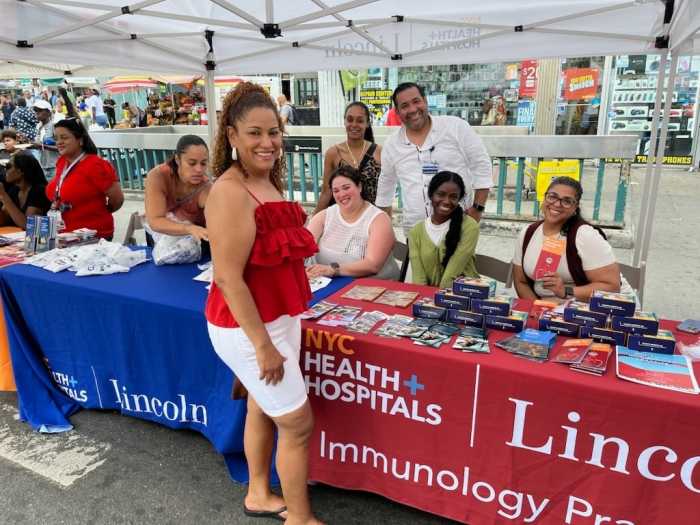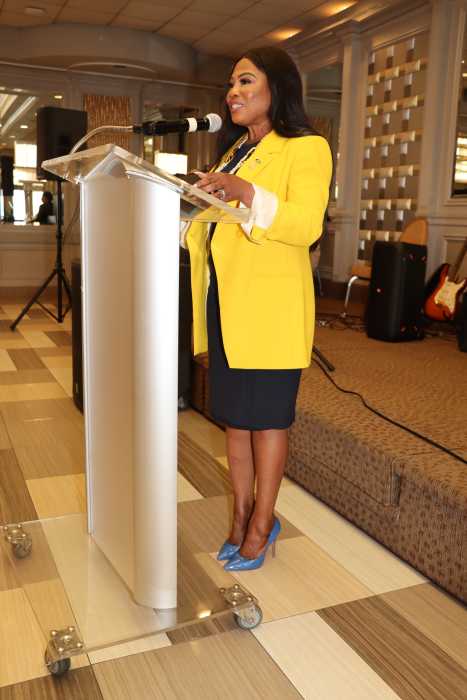Cassils’ rendering of their proposed wall, showing the use of the castings of activists’ fists. | COURTESY OF CASSILS
For Cassils, a “gender non-conforming trans masculine visual artist,” their submission to the LGBT Memorial Commission presented an exciting opportunity and a challenge.
“When we have these monuments, there’s always the problem with representation,” the artist told Gay City News. “When we go to representation, it’s who do you represent and who are you not representing?”
Cassils, who uses the pronouns them, they, and their, was among 40 artists who responded to a 2016 request for proposals to design and build a memorial in Hudson River Park, a state park that runs from 59th Street to Battery Park on the West Side of Manhattan. The memorial will honor the 49 people killed by a gunman in an LGBTQ nightclub in Orlando, Florida, on June 12, 2016.
An artist explains their submission for the LGBTQ memorial in Hudson River Park
Governor Andrew Cuomo conceived of the memorial for the victims in the Pulse massacre to “stand as an international symbol against ignorance, hate, bigotry, and gun violence,” read the executive order that created the commission.
Cassils, who uses just the one name, proposed erecting a 40-foot-long wall that was five feet high and built entirely of castings of “fist imprints collected from LGBT activists across the United States,” their submission to the memorial commission read. A “fist is not specific to any race, gender presentation, or sexual orientation, however it is an index of the fight,” the submission read.
The activists were to be nominated through a website that Cassils would have launched and they would have been accompanied by a small film crew to document casting the fist imprints first in clay and then later in bronze. This process was meant to prove that this piece of public art was representative of the broader community.
“The act of civic engagement isn’t just when it’s unveiled, it’s part of the process to get there,” Cassils said.
This “Wall of Resilience,” as Cassils titled it, memorialized the Pulse victims, but also struck at Donald Trump, who continues to press Congress to fund the construction of a wall on the border between the US and Mexico. Cassils’ wall would be curved, demonstrating that the fists had altered its structure, and its lower height showed that it was not insurmountable.
Cassils’ rendering of the portion of Hudson River Park where the LGBT Memorial would stand before and after installation of their design. | COURTESY OF CASSILS
“It’s purposely not a very high wall,” Cassils said. “Yes, there’s a wall, but it’s not a very high wall. It can be overcome. There is this physical momentum that you can see encapsulated in the piece… No matter where you stood, you would always be able to see over the wall.”
Cassils’ submission parted company with most of the other proposals.
Twenty-three of the 40, including the three finalists, incorporated rainbow elements, with Gilbert Baker, the creator of the Rainbow Flag, not surprisingly suggesting that the memorial should be an 80-foot flagpole supporting a 20 by 30-foot Rainbow Flag.
While recognizing the Rainbow Flag as “very important,” it is “a symbol that has been watered down and corporatized,” Cassils said.
The process of selecting the final design was rushed, or “efficient” as one member of the 10-member commission said.
Commissioners first met on September 20, 2016 and they had until November 18 to present Cuomo with five designs, though they ultimately gave him three choices. Cuomo was supposed to choose the winning design and announce it between December 5 and December 31. He delayed his announcement until June 2017, Pride month, guaranteeing that the announcement had more press coverage than it might otherwise have received.
“I was really excited about the proposal, and then I never heard anything,” said Cassils, whose design was not among the three finalists. “That was the first public art thing that I’ve ever applied for, and I actually pumped that proposal out in 36 hours.”
The three designs submitted to Cuomo were by Jordan Eagles and Spilios Gianakopoulos, Moshe Yehosuoua, and what would be the winning design by Anthony Goicolea.
Among the 40 designs, only 25 complied with the submission instructions by Gay City News’ count. It is unclear if the 15 that did not comply were disqualified. While the state parks department released the 40 submissions in response to an open records request, the agency did not release any documents indicating how any of the submissions were scored.
Certainly, Cassils was far more attuned to current politics than any other designer and far more in touch with the current state of mind of many LGBTQ activists. Their design used the “fist strike as an act of resistance” and they avoided specific identities in the piece.
“I wanted to make something that could incorporate a myriad of representations without getting stuck on the specifics of subjectivity,” Cassils said.



